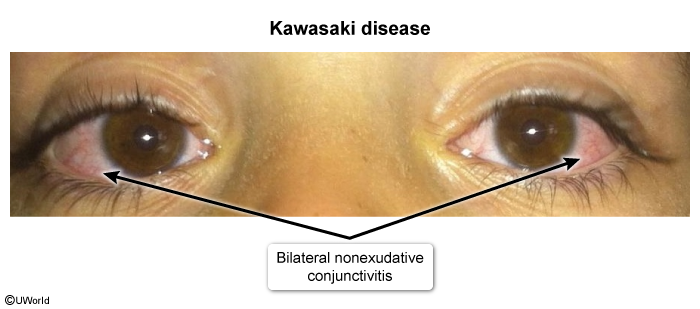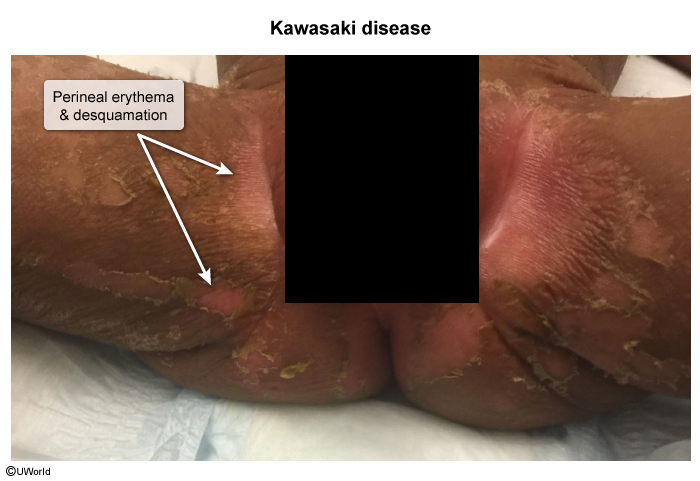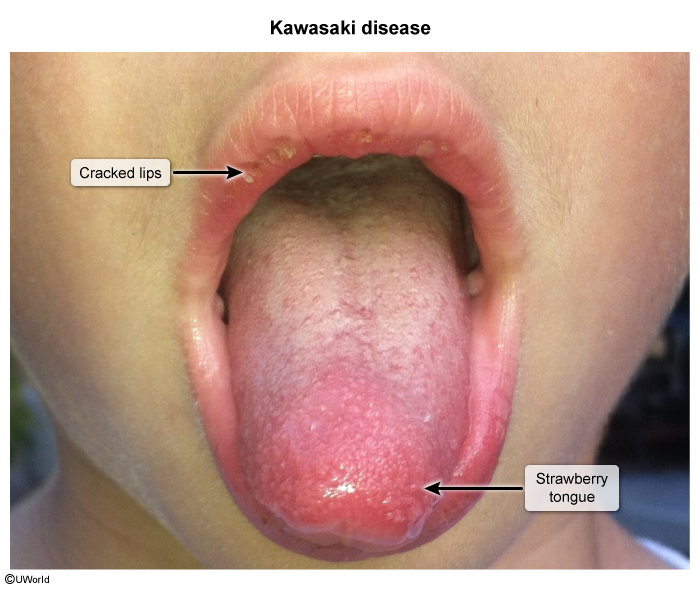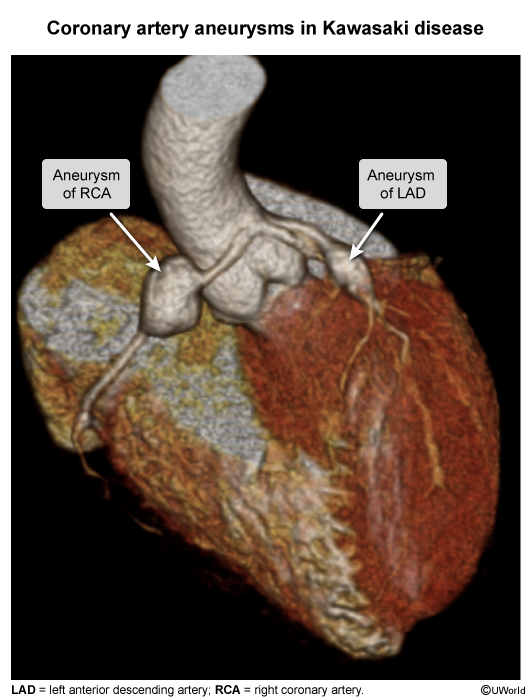Kawasaki Disease
Article Sections
Introduction
Kawasaki disease (KD) is an acute, inflammatory condition characterized by a systemic vasculitis of medium-sized arteries. KD classically manifests as an acute febrile illness primarily in children. It is one of the most common childhood vasculitides and can lead to coronary artery abnormalities and other serious sequelae if not identified and managed promptly.
Pathophysiology
The pathophysiology of KD appears to involve an aberrant immune response triggered by one or more yet unidentified antigens in genetically susceptible individuals. The immune reaction leads to systemic vasculitis that affects medium-sized vessels, notably the coronary arteries, causing inflammation and injury. Histopathologic findings often include infiltration of inflammatory cells (ie, lymphocytes, macrophages), with potential aneurysm formation and thrombosis due to vessel damage.
Risk factors
While the specific antigenic cause of KD remains unknown, there appears to be a greater incidence in children age <5, males (affected as much as 50% more than females), and those of Asian descent.
Continue Learning with UWorld
Get the full Kawasaki Disease article plus rich visuals, real-world cases, and in-depth insights from medical experts, all available through the UWorld Medical Library.
Figures
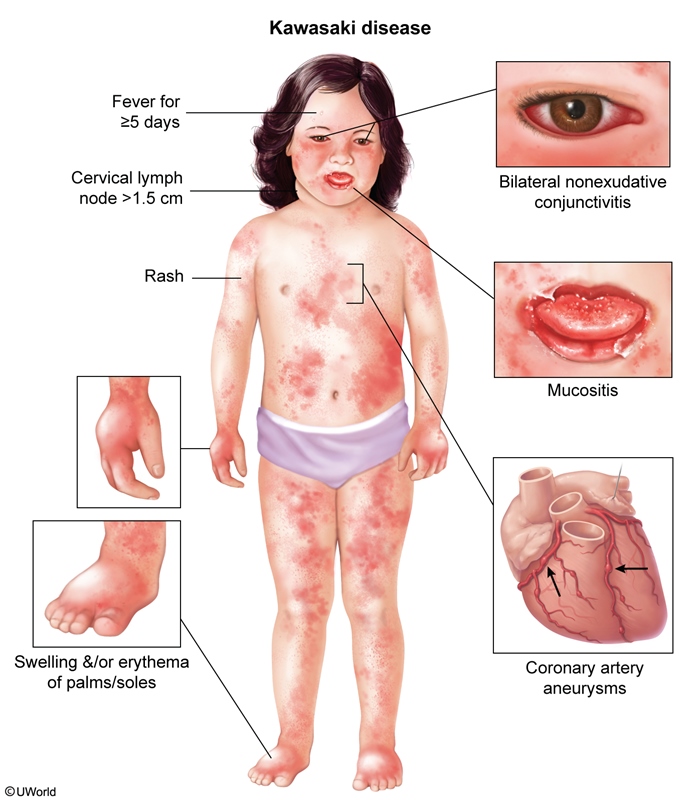
Images
